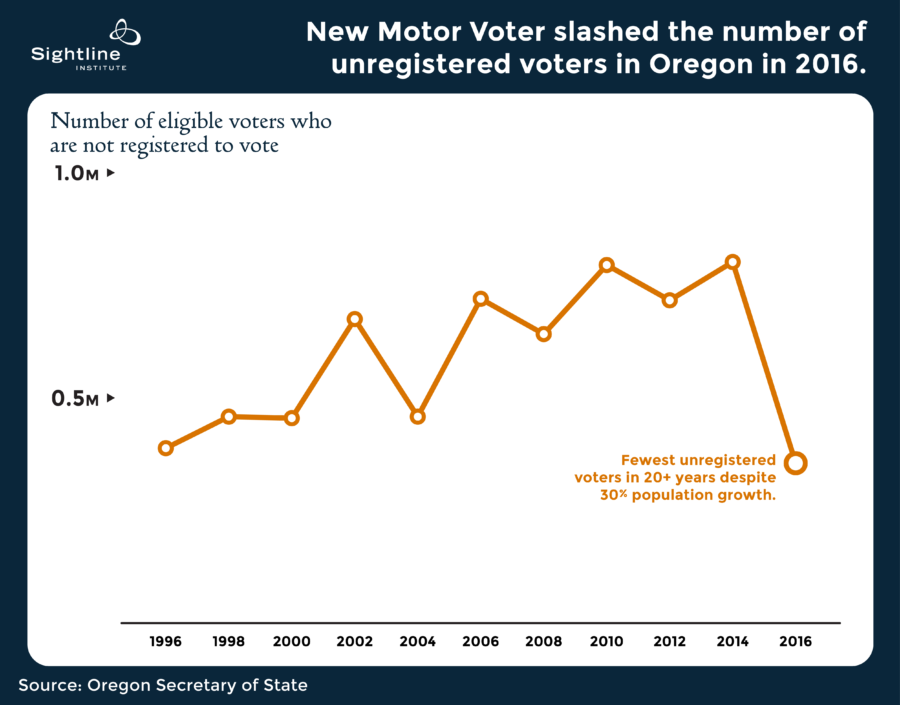Oregon’s success in honoring voting rights was a bright spot in the US election last week. In 2015, Oregon became the first state in the nation to adopt New Motor Voter—automatically registering citizens to vote when they prove their citizenship at the Department of Motor Vehicles.
California, Vermont, and West Virginia soon followed suit. State legislatures in Illinois and New Jersey also passed automatic voter registration bills with bi-partisan support, but their respective governors vetoed the bills. Last week, Alaska resoundingly approved automatic voter registration 64 to 36 percent.
When the Oregon law took effect at the beginning of 2016, more than 800,000 eligible Oregonians were not registered. In just its first nine months, Oregon’s New Motor Voter law registered over a quarter-million citizens, bringing the number of eligible but unregistered Oregonians to its lowest level in 20 years. Nearly 100,000 of those newly-registered citizens voted. Oregon expects to add several more hundred thousand voters to the rolls in coming years.

Original Sightline Institute graphic, available under our free use policy.

Original Sightline Institute graphic, available under our free use policy.
New Motor Voter boosted the share of eligible voters who are registered to vote from 75 percent in the 2012 election to 88 percent in 2016. A record nearly 2 million Oregonians voted in 2016, or 67 percent of eligible Oregon voters. That’s up from 1.8 million, or 62 percent of eligible voters, who voted in 2012, the last presidential election year.
Oregon is, once again, leading the nation in honoring citizens’ right to vote. Other states are already adopting Oregon’s proven best practice of automatically registering voters, giving more citizens across the United States the opportunity to participate in civic life.
In the next article, I’ll outline Washington state’s path to adopting automatic voter registration.









Jessica
I’d be interested in a comparison of the percentage of previously registered voters who actually voted in the recent election to the percentage of motor-voter registered voters who voted. If the newly registered were less likely to actually vote, then there might be remaining barriers to overcome.
Andy
Here’s some nice attention to Oregon’s landmark program from the NYT that appeared a few weeks ago (might also answer Jessica’s question above). The program has been both effective and cost effective.